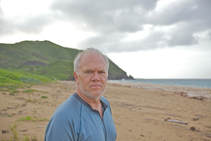
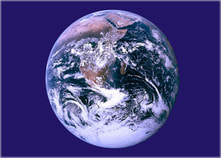 The Earth Day Flag created by John McConnell The Earth Day Flag created by John McConnell
The celebrated astrophysicist, Neil deGrasse Tyson, said, “People never look up.” Tyson or Starman, as he is called, is right. Look up and you’ll see amazing stuff: puffy cumulonimbus clouds rising 60,000 feet, broken rainbows, blue skies bluer than blue, Venus and Mars huddling beside the new moon, the Milky Way.
When you look up, you can’t help realize you are standing, feet firmly planted, on planet Earth. We are attached in a very physical way to this place...this planet called Earth. So, not only look up, but, as Rachel Carson declared in many of her writings, “Look around, and down, and closer.” Whether you are looking up or looking down, we celebrate our home planet every year on April 22. This celebration or “birthday” is called Earth Day and it has been going on since 1970 after Gaylord Nelson, a U.S. Senator from Wisconsin, proposed a day of national focus on environmental issues. Buoyed by the success of Rachel Carson’s book Silent Spring, about the concern for living organisms and the environment, Earth Day 1970 set out to raise public awareness for the health and harmony of the planet. People from all walks of life— young and old, farmers and urban dwellers, liberals and conservatives— banded together and achieved great things. The first Earth Day on April 22, 1970 led to the creation of the United States Environmental Protection Agency and the passage of the Clean Air Act, the Clean Water Act, and the Endangered Species Act. And now, forty-six years later, Earth Day 2016 has gone truly global. Around the world, people celebrate Earth Day with massive rallies, marches and festivals. But for many people it is not just an annual event, but all the quiet acts and the simple habits performed throughout the year. For instance, I make it a habit of recycling every piece of plastic I use (or as much as humanly possible). Less plastic that ends up in the oceans means happier and healthier sea turtles and whales. If you want some ideas about how you can demonstrate your support for environmental protection, you might start by checking out the book, Recycle This Book - 100 Top Children’s Book Authors Tell You How To Go Green. And if you link to the Earth Day website, you can take a peek at all the great activities planned around the world on April 22, 2018. Let’s make this the best Earth Day ever...all year long! 
With essays from renowned children’s book authors such as Ann Brashares, Jeanne DuPrau, Caroline B. Cooney, Laurie Halse Anderson, Bruce Coville, Gennifer Choldenko, and more than 100 others, each piece is an informative and inspiring call to kids of all ages to understand what’s happening to the environment, and to take action in saving our world. Helpful tips and facts are interspersed throughout.
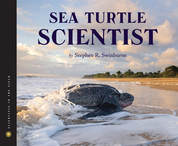
Part of the award-winning Scientists in the Field book series, Sea Turtle Scientist introduces Dr. Kimberly Stewart, “the turtle lady,” and describes her work on St. Kitts with endangered loggerhead sea turtles. The book provides extensive information on sea turtles and Dr. Stewart’s research, as well as the efforts of WIDECAST to preserve and protect these amazing creatures. For more information, visit the author's website.
Stephen R. Swinburne is a member of iNK's Authors on Call and is available for classroom programs through Field Trip Zoom, a terrific technology that requires only a computer, wifi, and a webcam. Click here to find out more.
MLA 8 Citation
0 Comments
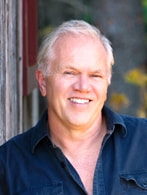 When I take a big bite into a hamburger, I am taking part in a food chain. When energy moves from one living organism (hamburger) to the next (me), scientists call this path or chain the Food Chain. Every living thing needs food. Food provides energy for plants and animals to live. Food chains begin with plants using sunlight, water and nutrients to make energy in a process called photosynthesis. There are lots of different kinds of food chains— some simple, some complex. An example of a simple food chain is when a rabbit eats grass and then a fox eats the rabbit. I think food chains are so interesting, I’ve written some poems about them. A Shark is the Sun Shark eats tuna, Tuna eats mackerel, Mackerel eats sardine, Sardine eats zooplankton, Zooplankton eats phytoplankton, Phytoplankton eats sun. So...shark eats sun. In every food chain there are producers, consumers and decomposers. Plants make their own food so they are producers. Animals are consumers because they consume plants or animals. Decomposers have the final say as they break down and decompose plants or animals and release nutrients back to the earth. Animals can be herbivores (plant eater), carnivores (meat eater) or omnivores (plant and meat eater). What are you? Why Can’t I Be On The Top? I don’t like the bottom, I want to be at the top. I’m tired of being crushed and stomped and chewed into slop. Why can’t I be the tiger with claws as sharp as shears, With a roar as loud as thunder To threaten trembling ears? Who designed this food chain? Is there a chance I can opt out? At least I’m not a plankton Floating all about. I hope you are happy with your place in the food chain. If not, you might want to sing along with the Food Chain Blues. Food Chain Blues Mama said be careful, It’s a risky world outside, Dangers lurking everywhere, Hardly a place to hide. She said some of us get eaten, And some of us survive. Count yourself quite lucky, If you make it out alive. We’re stuck in this cruel cycle, Nature’s red teeth and claws. You wanna do your best, To stay clear of someone’s jaws. I got the food chain blues I got the food chain blues Someone’s gonna eat me. I got the food chain blues! 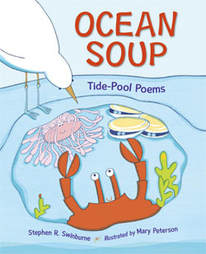 For more of Steve's poems about creatures check out Ocean Soup. It even has its own web page here. Steve Swinburne is a member of iNK's Authors on Call and is available for classroom programs through Field Trip Zoom, a terrific technology that requires only a computer, wifi, and a webcam. Click here to find out more. MLA 8 Citation
Swinburne, Stephen. "Food Chain Poems." Nonfiction Minute, iNK Think Tank, 8 Mar. 2018, www.nonfictionminute.org/the-nonfiction-minute/Food-Chain-Poems. 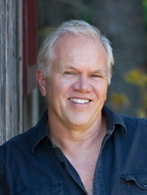 Lion’s mane jellyfish can grow seven feet wide with tentacles reaching a length of 100 feet. That’s the same length as a blue whale! Their bodies are 98 percent seawater. They live in the cold, boreal waters of the Arctic, northern Atlantic and northern Pacific Oceans. Slowly pulsating ocean currents carry the big jellies great distances. The long trailing, stinging tentacles capture and tear apart their prey. Swimmers beware when currents sweep lion’s manes close to shore. Their stings cause red swollen welts, and severe body contact with a lion’s mane jellyfish may be deadly. What animal can happily and safely slurp down a lion’s mane jellyfish as if it were a big bowl of Jello™? The leatherback sea turtle! Adult leatherbacks are the largest reptiles on earth today, averaging seven feet long. As the planet’s biggest turtle, they range from the Arctic Circle south to Antarctica, and they swim, on average, more than 6,000 miles each year. And they love lion’s mane jellyfish. As a matter of fact, lion’s mane jellyfish make up almost their entire diet. How can a seven-foot long sea turtle consume a creature armored with a hundred feet of stinging tentacles? Often referred to as Earth’s last dinosaur, leatherback sea turtles have lived on the planet for millions of years, surviving ice ages and major extinctions. For an animal to live that long on a diet of giant blobs of gelatinous saltwater, it better be very very good at tackling and consuming its delicious but dangerous meals of giant stinging jellyfish. And, it better have developed some cool adaptations over the ages. Here’s how they do it First off, a sharp pointed lip acts like a hook so the turtle can snag the jellyfish and hang onto it. Second, the turtle’s mouthful of backward-pointing spines prevents the jellyfish from escaping. A scientist once said to me, while looking into the mouth of a leatherback, “It’s the last thing a jellyfish will ever see!” Once the leatherback has consumed dozens and dozens of jellyfish, there’s the problem of all that salt in its diet. Eating too much salt will cause dehydration. No problem for the leatherback! The turtle is perfectly adapted to rid its body of all that excess salt. Salt or lacrimal glands, located near their eyes, allow leatherbacks to secret saline tears—and then they cry them away. So the largest marine reptile on earth evolved by getting better and better at eating the most unlikely diet, the largest jellyfish on earth. 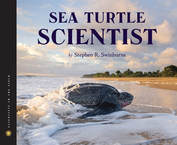 Steve Swinburne has written a book on sea turtles. To see information about the book as well as a study guide and video and picture gallery, click here. Steve Swinburne is a member of iNK's Authors on Call and is available for classroom programs through Field Trip Zoom, a terrific technology that requires only a computer, wifi, and a webcam. Click here to find out more. MLA 8 Citation Swinburne, Stephen R. "Who Eats the Largest Jellyfish in the World -- and Enjoys It?" Nonfiction, iNK Think Tank, 12 Oct. 2017, www.nonfictionminute.org/the-nonfiction-minute/who-eats-the-largest-jellyfish-in-the-world-and-enjoys-it. 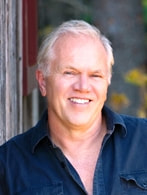 Alligators are one of the world’s most feared predators. With rows of dagger-sharp teeth, a muscled reptilian body, a dinosaur face and eyes, alligators frighten yet fascinate people. Scientists are working hard to understand this modern-day reptile. Dr. Daphne Soares, biology professor at the University of Maryland, was intrigued by the hunting ability of the alligator. She knew alligators have keen eyesight and excellent hearing but there was something else that made them such efficient predators, the king of the swamp. Careful focus on the dark bumps all over the animal’s upper and lower jaws led her to conclude that these bumps “were very sensitive tactile organs that can detect ripples in the water.” The ability to feel waves or ripples is one of the many features that makes the alligator an excellent predator. Once the alligator detects ripples, it swims swiftly and silently in the direction of the prey. Alligators are carnivores. They seize and hold their prey with sharp teeth. Small quarry, such as fish and ducks, are swallowed hold. Larger victims are shaken apart into smaller, bite size pieces. Gators have between 74 and 80 teeth in the jaws at a time. When their teeth get worn down, they are replaced with new ones. Imagine that! No need for a dentist. Alligators can go through 2,000 to 3,000 teeth in a lifetime. Alligators are a rare success story of an endangered species saved from the brink of extinction. As late as 1950s, alligators were hunted for meat and hide. They were placed on the Endangered Species list in 1967, and now thrive in the freshwater swamps and wetlands of the southeastern United States. A smiling American Alligator displaying the bumps around its upper and lower jaws. 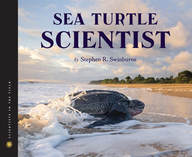 Steve wrote, Sea Turtle Scientist after spending time with Dr. Kimberly Stewart, “the turtle lady,” and describes her work on St. Kitts with endangered loggerhead sea turtles. Steve is a member of iNK's Authors on Call and is available for classroom programs through Field Trip Zoom, a terrific technology that requires only a computer, wifi, and a webcam. Click here to find out more. MLA 8 Citation Swinburne, Stephen R. "Alligator Smiles." Nonfiction Minute, iNK Think Tank, 29 Sept. 2017, www.nonfictionminute.org/the-nonfiction-minute/alligator-smiles. 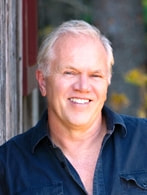 I really like vultures. Sure, they’re ugly and they eat nasty dead things. But those are not necessarily bad characteristics. First let’s deal with “ugly.” Vultures’ bald heads are what make them seem ugly to most people. But think about why they’re bald. Imagine thrusting your head inside the carcass of a white-tailed deer to reach the meat. A feathered head might capture bits of flesh, blood and gore and you end up with a face full bacteria and flies. Scientists believe that one reason vultures have evolved featherless heads is to aid in hygiene. A bald head stays clean and any remaining germs or bacteria are baked off by the sun. Vultures have also found that a bald head can help with temperature regulation. When it gets cold they can tuck their heads down to keep their neck covered with feathers. When it’s hot, vultures can extend their neck to expose bare skin. Their bald heads work so well that I wrote a poem about them. Naked Head It’s best to have no feathers, When you stick your head in guts, That way you don’t go walkin’ round, Your noggin dripping schmutz. Moving on to “eating nasty dead things,” the next time you see vultures eating a dead animal on the side of the road, be thankful! That carcass might be dead from rabies or contaminated with other harmful diseases. Vultures have the amazing ability to consume rotting and diseased flesh and stay healthy. It’s all in the stomach. Vultures possess very powerful stomach acids that destroy most bacteria and deadly viruses. In fact, vulture stomach acid is so strong it can dissolve metal! Except if that metal is lead shot -- many turkey vultures are killed every year by consuming shot that they encounter in dead deer. Vultures are the world’s natural “sanitation workers,” helping to stop the spread of disease. I’m so appreciative of the work they do, I even wrote a poem about eating dead things: Dead Meat I like my meat dead, It’s best if it’s not moving. Don’t want to see one final twitch, I prefer it oozing So, the next time you see a vulture circling in the noonday sky, think about the valuable and important clean up service this bird provides to us and to the environment. Maybe I’ll write a poem about that….  Steve Swinburne is a science writer, but as you can see from this Minute, he likes to write poetry too. In his book Ocean Soup, he offers verses in the voices of tide-pool animals, including the barnacle, sea urchin, sculpin, mussel, starfish, hermit crab, anemone, and lobster. For more about Steve's poetry, click here. Steve Swinburne is a member of iNK's Authors on Call and is available for classroom programs through FieldTripZoom, a terrific technology that requires only a computer, wifi, and a webcam. Click here to find out more. MLA 8 Citation
Swinburne, Stephen R. "In Praise of Vultures." Nonfiction Minute, iNK Think Tank, 8 Dec. 2017, www.nonfictionminute.org/ In-Praise-Of-Vultures. |
*NEWS
|
For Vicki Cobb's BLOG (nonfiction book reviews, info on education, more), click here: Vicki's Blog
The NCSS-CBC Notable Social Studies Committee is pleased to inform you
that 30 People Who Changed the World has been selected for Notable Social Studies Trade Books for Young People 2018, a cooperative project of the National Council for the Social Studies (NCSS) & the Children’s Book Council
Categories
All
Abolitionists
Adams Janus
Adaptation
Adaptations
Adkins Jan
Advertising
Aerodynamics
Africa
African American History
African Americans
Africa West
Agriculture
Aircraft
Air Pilots
Air Pressure
Air Travel
Albee Sarah
Alchemy
Alligators
Allusion
American History
American Icons
Amphibians
Amundsen Roald
Anatomy
Ancient
Ancient Cultures
Anderson Marian 1897-1993
Animal Behavior
Animal Experimentation
Animal Intelligence
Animals
Animation
Antarctica
Ants
Apache Indians
Apes
April Fool's Day
Architecture
Argument
Arithmetic
Art
Art Deco
Artists
Arts
Asia
Astronauts
Astronomy
Athletes
Atomic Theory
Audubon Societies
Authors
Autobiography
Automobiles
Aviation
Awards
Bacteria
Baseball
Battuta Ibn
Bears
Beatles
Beavers
Bees
Biodegradation
Biography
Biology
Biomes
Biomimicry
Biplanes
Birds
Black Death
Black History
Blindness
Blizzards
Bombs
Bonaparte Napoleon
Boone Daniel
Botany
Brazil
Bridges
Brill Marlene Targ
Brooklyn Bridge
Brown John
Buffaloes
Building Materials
Butterflies
Caesar
Caesar Julius
Caissons
Calculus
Calendars
Cannibal
Capitals
Caravaggio
Carbon Dioxide
Carnivores
Carson Mary Kay
Cartoons & Comics
Carving (Decorative Arts)
Cascade Range
Castaldo Nancy
Castles
Castrovilla Selene
Cathedrals
Cats
Caves
Celts
Cemeteries
Chemistry
Children's Authors
Child Welfare
China
Choctaw Indians
Christmas
Chronometers
Cicadas
Cinco De Mayo
Ciphers
Circle
Citizenship
Civil Rights
Civil Rights Movements
Civil War
Civil War - US
Climate
Climate Change
Clocks And Watches
Clouds
Cobb Vicki
COBOL (Computer Language)
Code And Cipher Stories
Collard III Sneed B.
Collectors And Collecting
Color
Commerce
Communication
Competition
Compilers
Composers
Computers
Congressional Gold Medal
Consitution
Contests
Contraltos
Coolidge Calvin
Cooling
Corms
Corn
Counterfeiters
Covid-19
Crocodiles
Cryptography
Culture
Darwin Charles
Declaration Of Independence
Decomposition
Decompression Sickness
Deep-sea Animals
Deer
De Medici Catherine
Design
Detectives
Dickens Charles
Disasters
Discrimination
Diseases
Disney Walt
DNA
Dogs
Dollar
Dolphins
Douglass Frederick 1818-1895
Droughts
Dr. Suess
Dunphy Madeleine
Ear
Earth
Earthquakes
Ecology
Economics
Ecosystem
Edison Thomas A
Education
Egypt
Eiffel-gustave-18321923
Eiffel-tower
Einstein-albert
Elephants
Elk
Emancipationproclamation
Endangered Species
Endangered-species
Energy
Engineering
England
Englishlanguage-arts
Entomology
Environmental-protection
Environmental-science
Equinox
Erie-canal
Etymology
Europe
European-history
Evolution
Experiments
Explorers
Explosions
Exports
Extinction
Extinction-biology
Eye
Fairs
Fawkes-guy
Federalgovernment
Film
Fires
Fishes
Flight
Floods
Flowers
Flute
Food
Food-chains
Foodpreservation
Foodsupply
Food-supply
Football
Forceandenergy
Force-and-energy
Forensicscienceandmedicine
Forensic Science And Medicine
Fossils
Foundlings
France
Francoprussian-war
Freedom
Freedomofspeech
French-revolution
Friction
Frogs
Frontier
Frontier-and-pioneer-life
Frozenfoods
Fugitiveslaves
Fultonrobert
Galapagos-islands
Galleys
Gametheory
Gaudi-antoni-18521926
Gender
Generals
Genes
Genetics
Geography
Geology
Geometry
Geysers
Ghosts
Giraffe
Glaciers
Glaucoma
Gliders-aeronautics
Global-warming
Gods-goddesses
Gold-mines-and-mining
Government
Grant-ulysses-s
Grasshoppers
Gravity
Great-britain
Great-depression
Greece
Greek-letters
Greenberg Jan
Hair
Halloween
Handel-george-frederic
Harness Cheryl
Harrison-john-16931776
Health-wellness
Hearing
Hearing-aids
Hearst-william-randolph
Henry-iv-king-of-england
Herbivores
Hip Hop
History
History-19th-century
History-france
History-world
Hitler-adolph
Hoaxes
Holidays
Hollihan Kerrie Logan
Homestead-law
Hopper-grace
Horses
Hot Air Balloons
Hot-air-balloons
Housing
Huguenots
Human Body
Hurricanes
Ice
Icebergs
Illustration
Imagery
Imhotep
Imperialism
Indian-code-talkers
Indonesia
Industrialization
Industrial-revolution
Inquisition
Insects
Insulation
Intelligence
Interstatecommerce
Interviewing
Inventions
Inventors
Irrational-numbers
Irrigation
Islands
Jacksonandrew
Jazz
Jeffersonthomas
Jefferson-thomas
Jemisonmae
Jenkins-steve
Jet-stream
Johnsonlyndonb
Jokes
Journalism
Keeling-charles-d
Kennedyjohnf
Kenya
Kidnapping
Kingmartinlutherjr19291968
Kingmartinlutherjr19291968d6528702d6
Kings-and-rulers
Kings Queens
Kings-queens
Koala
Labor
Labor Policy
Lafayette Marie Joseph Paul Yves Roch Gilbert Du Motier Marquis De 17571834
Landscapes
Languages-and-culture
Law-enforcement
Layfayette
Levers
Levinson Cynthia
Lewis And Clark Expedition (1804-1806)
Lewis Edmonia
Liberty
Lift (Aerodynamics)
Light
Lindbergh Charles
Liszt Franz
Literary Devices
Literature
Lizards
Longitude
Louis XIV King Of France
Lumber
Lunar Calendar
Lynching
Macaws
Madison-dolley
Madison-james
Madison-james
Mammals
Maneta-norman
Maneta-norman
Marathon-greece
Marine-biology
Marine-biology
Marines
Marsupials
Martial-arts
Marx-trish
Mass
Massachusetts-maritime-academy
Mass-media
Mastodons
Mathematics
May-day
Mcclafferty-carla-killough
Mcclafferty-carla-killough
Mckinley-william
Measurement
Mechanics
Media-literacy
Media-literacy
Medicine
Memoir
Memorial-day
Metaphor
Meteorology
Mexico
Mickey-mouse
Microscopy
Middle-west
Migration
Military
Miners
Mississippi
Molasses
Monarchy
Monsters
Montgomery
Montgomery-bus-boycott-19551956
Montgomery-heather-l
Monuments
Moon
Moran-thomas
Morsecode
Morsesamuel
Moss-marissa
Moss-marissa
Motion
Motion-pictures
Mummies
Munro-roxie
Munro-roxie
Musclestrength
Museums
Music
Muslims
Mythologygreek
Nanofibers
Nanotechnology
Nathan-amy
Nathan-amy
Nationalfootballleague
Nationalparksandreserves
Nativeamericans
Native-americans
Native-americans
Naturalhistory
Naturalists
Nature
Nauticalcharts
Nauticalinstruments
Navajoindians
Navigation
Navy
Ncaafootball
Nervoussystem
Newdeal19331939
Newman-aline
Newman-aline
Newton-isaac
New-york-city
Nobelprizewinners
Nomads
Nonfictionnarrative
Nutrition
Nylon
Nymphs-insects
Oaths Of Office
Occupations
Ocean
Ocean-liners
Olympics
Omnivores
Optics
Origami
Origin
Orphans
Ottomanempire
Painters
Painting
Paleontology
Pandemic
Paper-airplanes
Parksrosa19132005
Parrots
Passiveresistance
Patent Dorothy Hinshaw
Peerreview
Penguins
Persistence
Personalnarrative
Personification
Pets
Photography
Physics
Pi
Pigeons
Pilots
Pinkertonallan
Pirates
Plague
Plains
Plainsindians
Planets
Plantbreeding
Plants
Plastics
Poaching
Poetry
Poisons
Poland
Police
Political-parties
Pollen
Pollution
Polo-marco
Populism
Portraits
Predation
Predators
Presidentialmedaloffreedom
Presidents
Prey
Prey-predators
Prey-predators
Prime-meridian
Pringle Laurence
Prohibition
Proteins
Protestandsocialmovements
Protestants
Protestsongs
Punishment
Pyramids
Questioning
Radio
Railroad
Rainforests
Rappaport-doreen
Ratio
Reading
Realism
Recipes
Recycling
Refrigerators
Reich-susanna
Religion
Renaissance
Reproduction
Reptiles
Reservoirs
Rheumatoidarthritis
Rhythm-and-blues-music
Rice
Rivers
Roaringtwenties
Roosevelteleanor
Rooseveltfranklind
Roosevelt-franklin-d
Roosevelt-theodore
Running
Russia
Safety
Sanitation
Schwartz David M
Science
Scientificmethod
Scientists
Scottrobert
Sculpture
Sculpturegardens
Sea-level
Seals
Seals-animals
Secretariesofstate
Secretservice
Seeds
Segregation
Segregationineducation
Sensessensation
September11terroristattacks2001
Seuss
Sextant
Shackletonernest
Shawneeindians
Ships
Shortstories
Silkworms
Simple-machines
Singers
Siy Alexandra
Slavery
Smuggling
Snakes
Socialchange
Social-change
Socialjustice
Social-justice
Socialstudies
Social-studies
Social-studies
Sodhouses
Solarsystem
Sound
Southeast-asia
Soybean
Space Travelers
Spain
Speech
Speed
Spiders
Spies
Spiritualssongs
Sports
Sports-history
Sports-science
Spring
Squirrels
Statue-of-liberty
STEM
Storms
Strategy
Sugar
Sumatra
Summer
Superbowl
Surgery
Survival
Swanson-jennifer
Swinburne Stephen R.
Synthetic-drugs
Taiwan
Tardigrada
Tasmania
Tasmanian Devil
Tasmanian-devil
Technology
Tecumsehshawneechief
Telegraph-wireless
Temperature
Tennis
Terrorism
Thomas Peggy
Thompson Laurie Ann
Time
Titanic
Tombs
Tortoises
Towle Sarah
Transcontinental-flights
Transportation
Travel
Trees
Trung Sisters Rebellion
Tundra
Turnips
Turtles
Typhoons
Underground Railroad
Us-environmental-protection-agency
Us History
Us-history
Ushistoryrevolution
Us History Revolution
Us-history-war-of-1812
Us Presidents
Ussupremecourtlandmarkcases
Vacations
Vaccines
Vangoghvincent
Vegetables
Venom
Vietnam
Viruses
Visual-literacy
Volcanoes
Voting-rghts
War
Warne-kate
Warren Andrea
Washington-dc
Washington George
Water
Water-currents
Wax-figures
Weapons
Weather
Weatherford Carole Boston
Whiting Jim
Wildfires
Winds
Windsor-castle
Wolves
Woman In History
Women
Women Airforce Service Pilots
Women-airforce-service-pilots
Womeninhistory
Women In History
Women-in-science
Women's History
Womens-roles-through-history
Wonder
Woodson-carter-godwin-18751950
World-war-i
World War Ii
World-war-ii
Wright Brothers
Writing
Writing-skills
Wwi
Xrays
Yellowstone-national-park
Zaunders Bo
ArchivesMarch 2021
February 2021
January 2021
December 2020
November 2020
October 2020
September 2020
June 2020
May 2020
April 2020
March 2020
February 2020
January 2020
December 2019
October 2019
September 2019
August 2019
July 2019
May 2019
April 2019
March 2019
February 2019
January 2019
December 2018
November 2018
September 2018
June 2018
May 2018
April 2018
March 2018
February 2018
January 2018
December 2017
November 2017
October 2017
September 2017
March 2017
The NONFICTION MINUTE, Authors on Call, and. the iNK Books & Media Store are divisions of iNK THINK TANK INC.
a 501 (c) (3) nonprofit corporation. To return to the iNK Think Tank landing page click the icon or the link below. :
http://inkthinktank.org/
For more information or support, contact thoughts@inkthinktank.org
For Privacy Policy, go to
Privacy Policy
© COPYRIGHT the Nonfiction Minute 2020.
ALL RIGHTS RESERVED.
This site uses cookies to personalize your experience, analyze site usage, and offer tailored promotions. www.youronlinechoices.eu
Remind me later
Archives
March 2023
February 2023
January 2023
December 2022
November 2022
October 2022
September 2022
June 2022
May 2022
April 2022
March 2022
February 2022
January 2022
December 2021
November 2021
September 2021
April 2021
March 2021
February 2021
November 2020
October 2020
September 2020
June 2020
May 2020
April 2020
March 2020
February 2020
January 2020
October 2019
August 2019
July 2019
May 2019
April 2019
December 2018
September 2018
June 2018
May 2018
March 2018
February 2018
January 2018
December 2017
November 2017
October 2017
September 2017




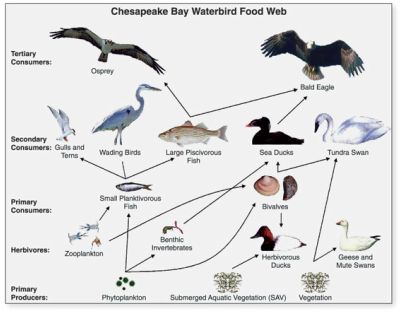
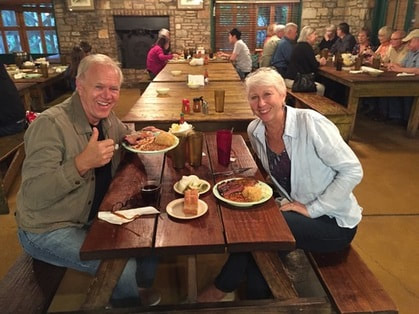


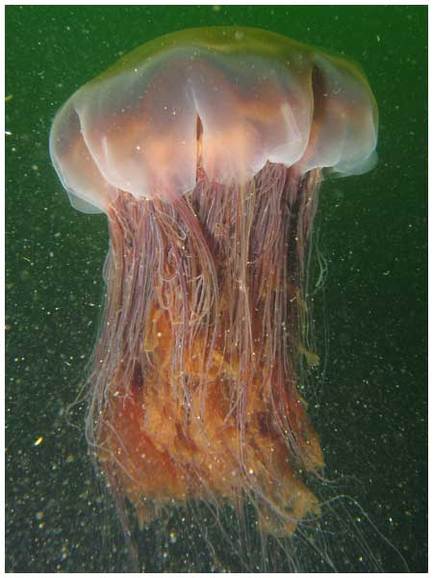
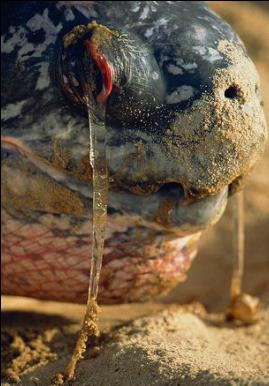
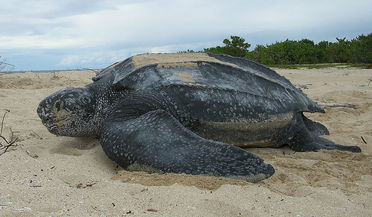
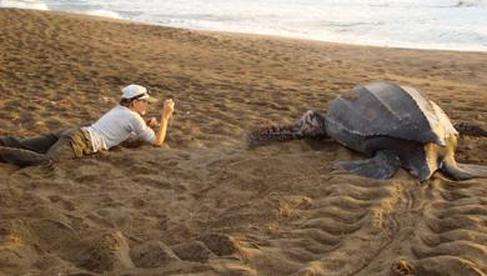


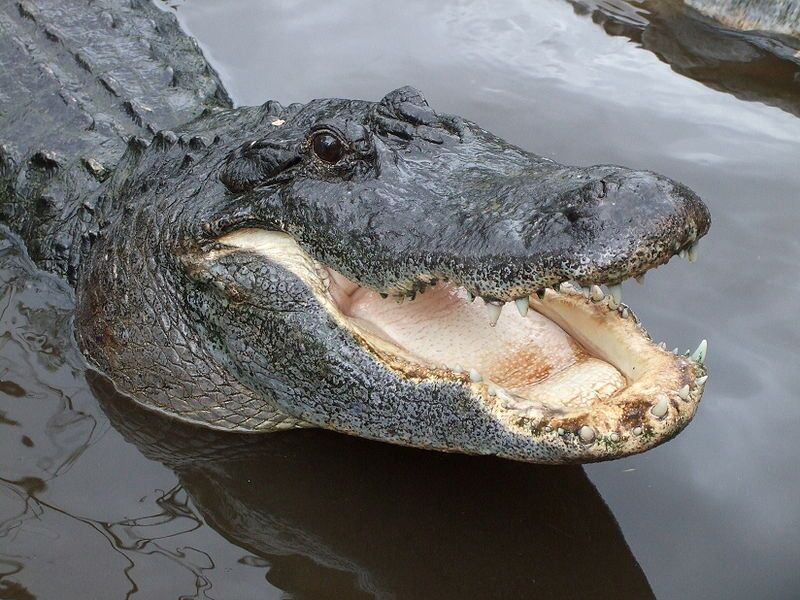


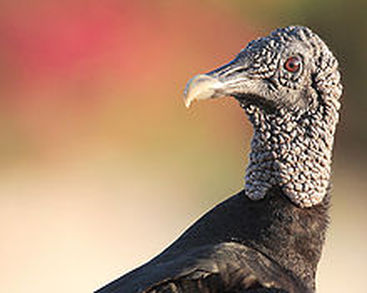

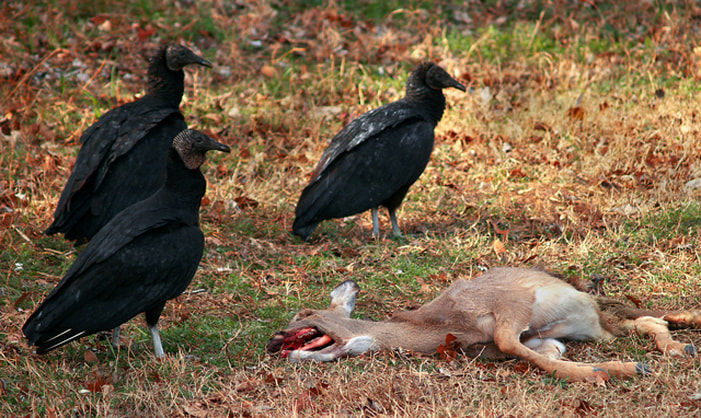

 RSS Feed
RSS Feed
